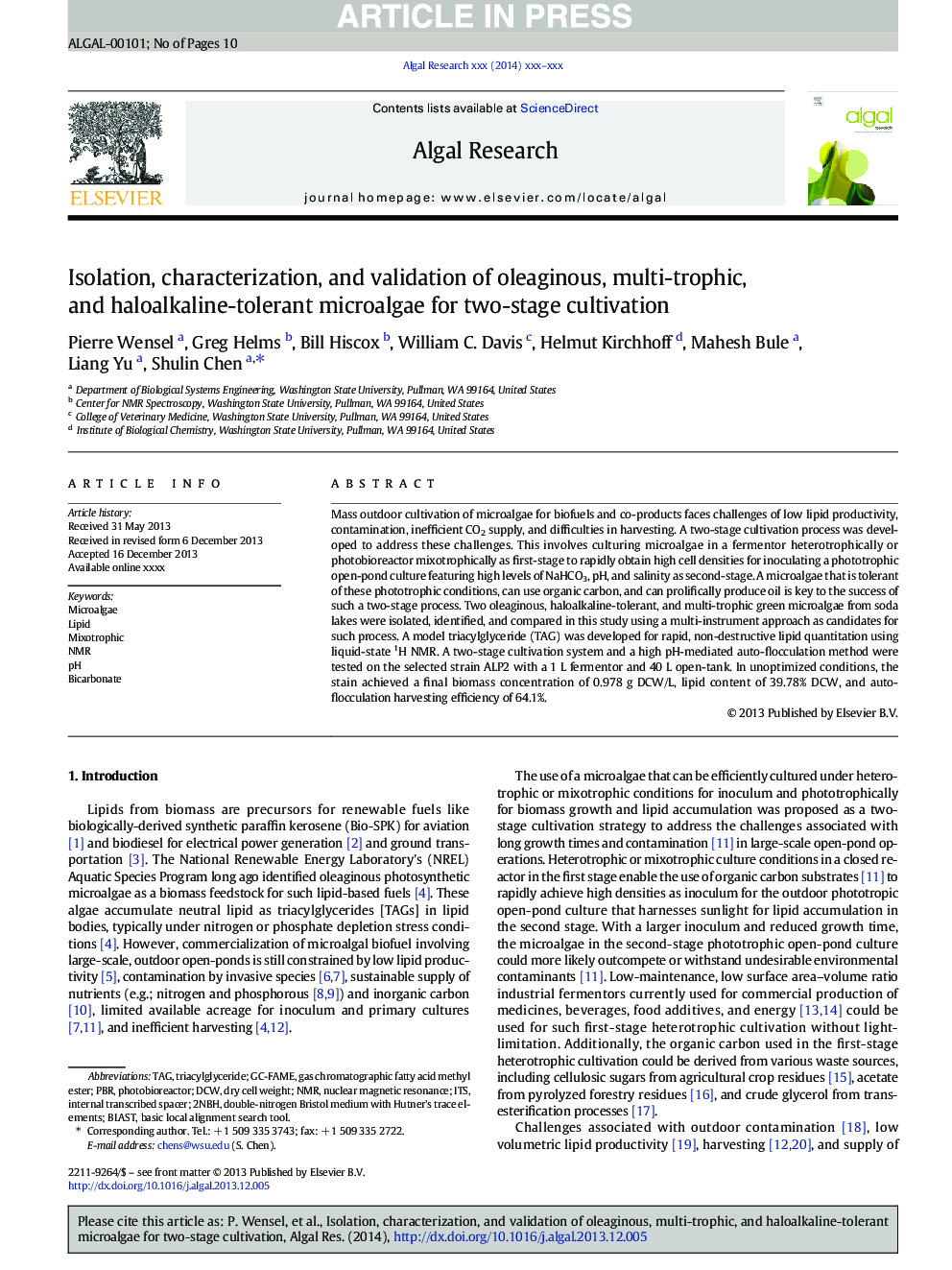| Article ID | Journal | Published Year | Pages | File Type |
|---|---|---|---|---|
| 8088417 | Algal Research | 2014 | 10 Pages |
Abstract
Mass outdoor cultivation of microalgae for biofuels and co-products faces challenges of low lipid productivity, contamination, inefficient CO2 supply, and difficulties in harvesting. A two-stage cultivation process was developed to address these challenges. This involves culturing microalgae in a fermentor heterotrophically or photobioreactor mixotrophically as first-stage to rapidly obtain high cell densities for inoculating a phototrophic open-pond culture featuring high levels of NaHCO3, pH, and salinity as second-stage. A microalgae that is tolerant of these phototrophic conditions, can use organic carbon, and can prolifically produce oil is key to the success of such a two-stage process. Two oleaginous, haloalkaline-tolerant, and multi-trophic green microalgae from soda lakes were isolated, identified, and compared in this study using a multi-instrument approach as candidates for such process. A model triacylglyceride (TAG) was developed for rapid, non-destructive lipid quantitation using liquid-state 1H NMR. A two-stage cultivation system and a high pH-mediated auto-flocculation method were tested on the selected strain ALP2 with a 1 L fermentor and 40 L open-tank. In unoptimized conditions, the stain achieved a final biomass concentration of 0.978 g DCW/L, lipid content of 39.78% DCW, and auto-flocculation harvesting efficiency of 64.1%.
Keywords
Related Topics
Physical Sciences and Engineering
Energy
Renewable Energy, Sustainability and the Environment
Authors
Pierre Wensel, Greg Helms, Bill Hiscox, William C. Davis, Helmut Kirchhoff, Mahesh Bule, Liang Yu, Shulin Chen,
